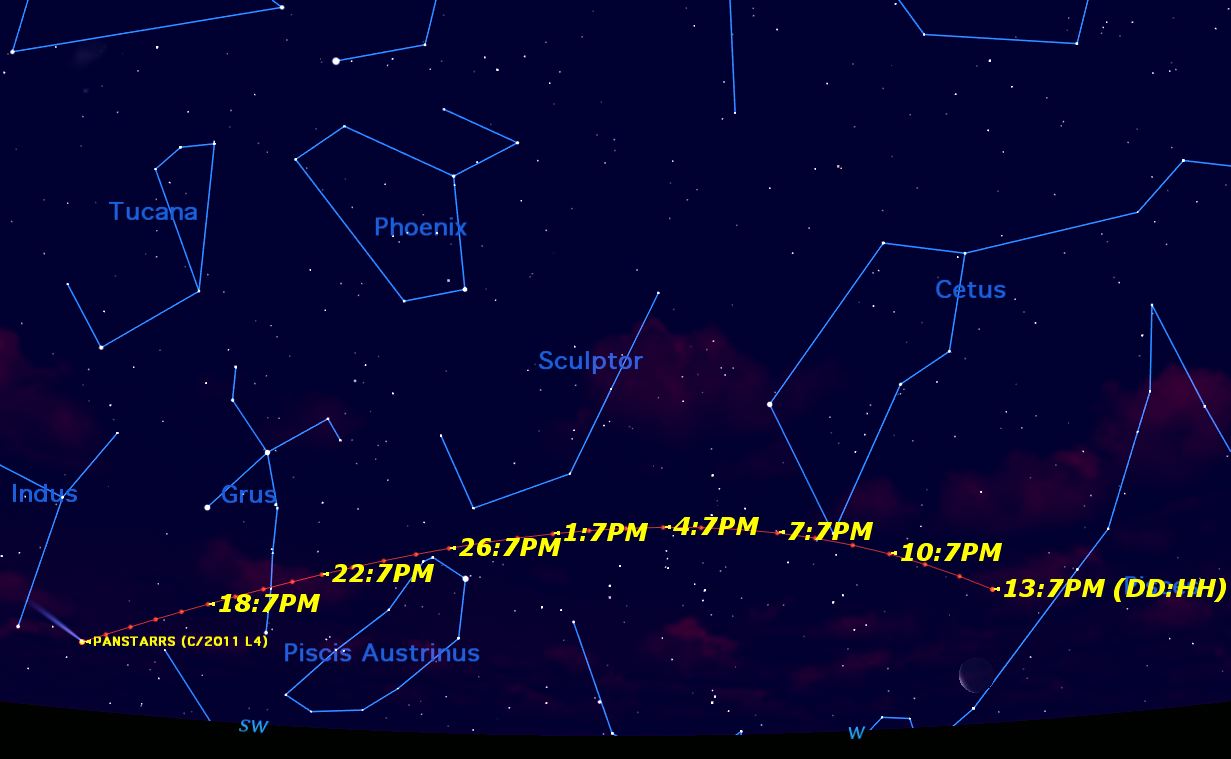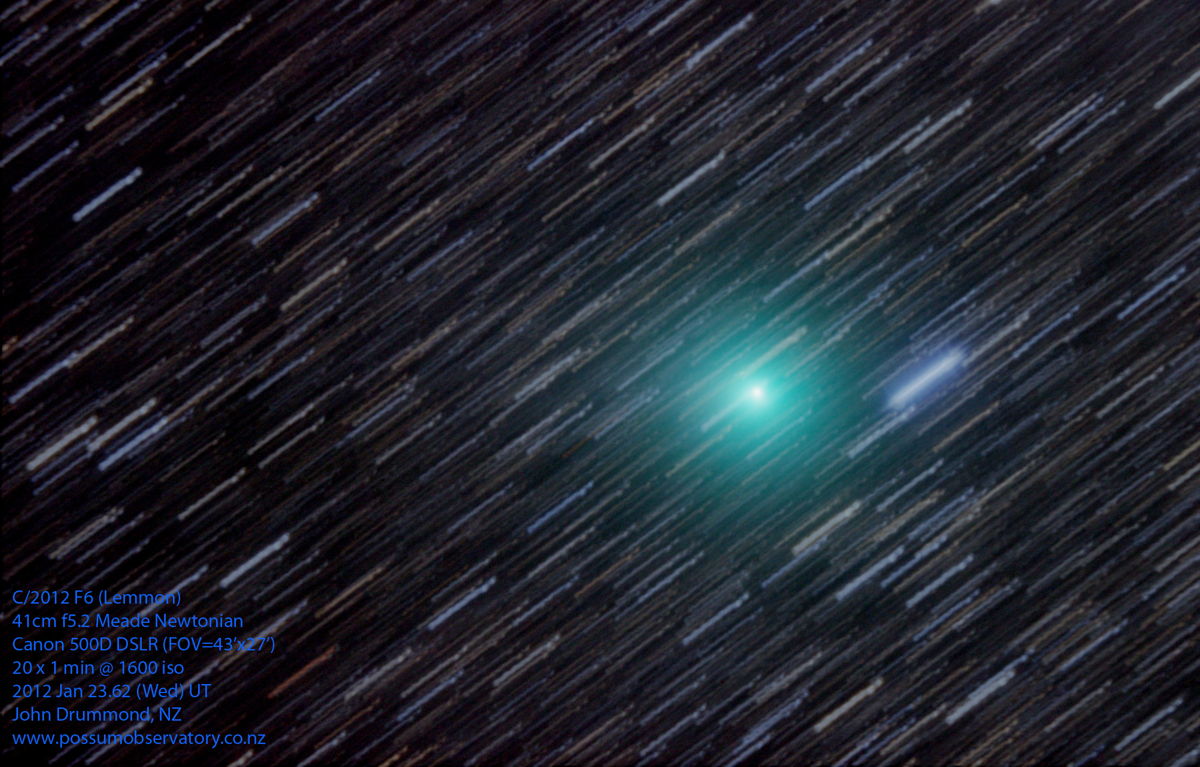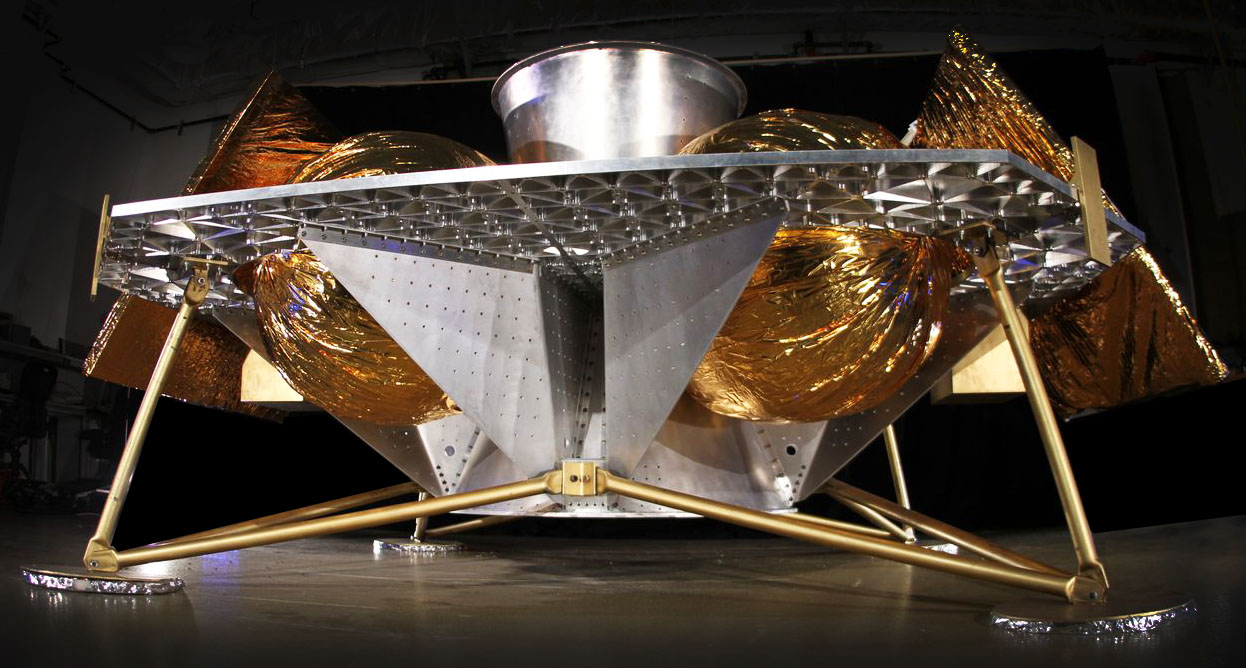Bright Comets Grace Earth's Night Sky in February and March

The comets are coming.
There are always comets in the sky, but most of them are too faint and far away to be seen without a telescope. But that's about to change.
For observers in the Southern Hemisphere there are two comets currently visible, Comet C/2011 L4 (PANSTARRS) and Comet C/2012 F6 (Lemmon).
Their complicated-looking names are really quite simple. The number, letter, and number indicate when they were discovered: the year, a letter indicating the month half, and the order within the month half. "A" indicates the first half of January, "B" indicates the second half of January, "C" indicates the first half of February, etc.
For example, "2011 L4" indicates the comet was the fourth comet discovered in the second half of June 2011, and "2012 F6" indicates that it was the sixth comet discovered in the second half of March 2012. The names in brackets indicate the discoverer. Nowadays many comets are discovered by and credited to a team like both PANSTARRS and the Mount Lemmon Survey.
Comet C/2011 L4 (PANSTARRS)
This comet was discovered two years ago by the PANSTARRS team, and has gradually become brighter as it nears both the sun and the Earth. It has not brightened as quickly as anticipated and is currently just visible with unaided eyes. It is approaching Earth from the south so is currently visible only from south of the equator just before sunrise. The chart shows its predicted positions for the rest of the month.
Breaking space news, the latest updates on rocket launches, skywatching events and more!
Beginning around February 20, it will be better seen in the evening sky, and should rapidly increase in brightness. It is predicted to reach maximum brightness in March when it will get too close to the sun for southern observers, becoming a bright object in the Northern Hemisphere.
Comet C/2012 F6 (Lemmon)
This comet came as a bit of a surprise. Currently located in the constellation Octans near the south celestial pole, Comet C/2012 F6 (Lemmon) is barely visible with unaided eyes and not likely to get much brighter. It's rather unusual to have two naked eye comets in the sky simultaneously, albeit faint ones.
Those who call the Northern Hemisphere home may be missing out on these comets this month, but that should change soon, as Comet C/2011 L4 (PANSTARRS) rounds the sun in early March and appears above the sun at sunset.
Editor's note: If you snap amazing photos of comets C/2011 L4 (PANSTARRS) and C/2012 F6 (Lemmon, or any other night sky object, that you'd like to share for a possible story or image gallery, send photos, comments and your name and location to managing editor Tariq Malik at spacephotos@space.com.
This article was provided to SPACE.com by Starry Night Education, the leader in space science curriculum solutions. Follow Starry Night on Twitter @StarryNightEdu.
Join our Space Forums to keep talking space on the latest missions, night sky and more! And if you have a news tip, correction or comment, let us know at: community@space.com.

Geoff Gaherty was Space.com's Night Sky columnist and in partnership with Starry Night software and a dedicated amateur astronomer who sought to share the wonders of the night sky with the world. Based in Canada, Geoff studied mathematics and physics at McGill University and earned a Ph.D. in anthropology from the University of Toronto, all while pursuing a passion for the night sky and serving as an astronomy communicator. He credited a partial solar eclipse observed in 1946 (at age 5) and his 1957 sighting of the Comet Arend-Roland as a teenager for sparking his interest in amateur astronomy. In 2008, Geoff won the Chant Medal from the Royal Astronomical Society of Canada, an award given to a Canadian amateur astronomer in recognition of their lifetime achievements. Sadly, Geoff passed away July 7, 2016 due to complications from a kidney transplant, but his legacy continues at Starry Night.


